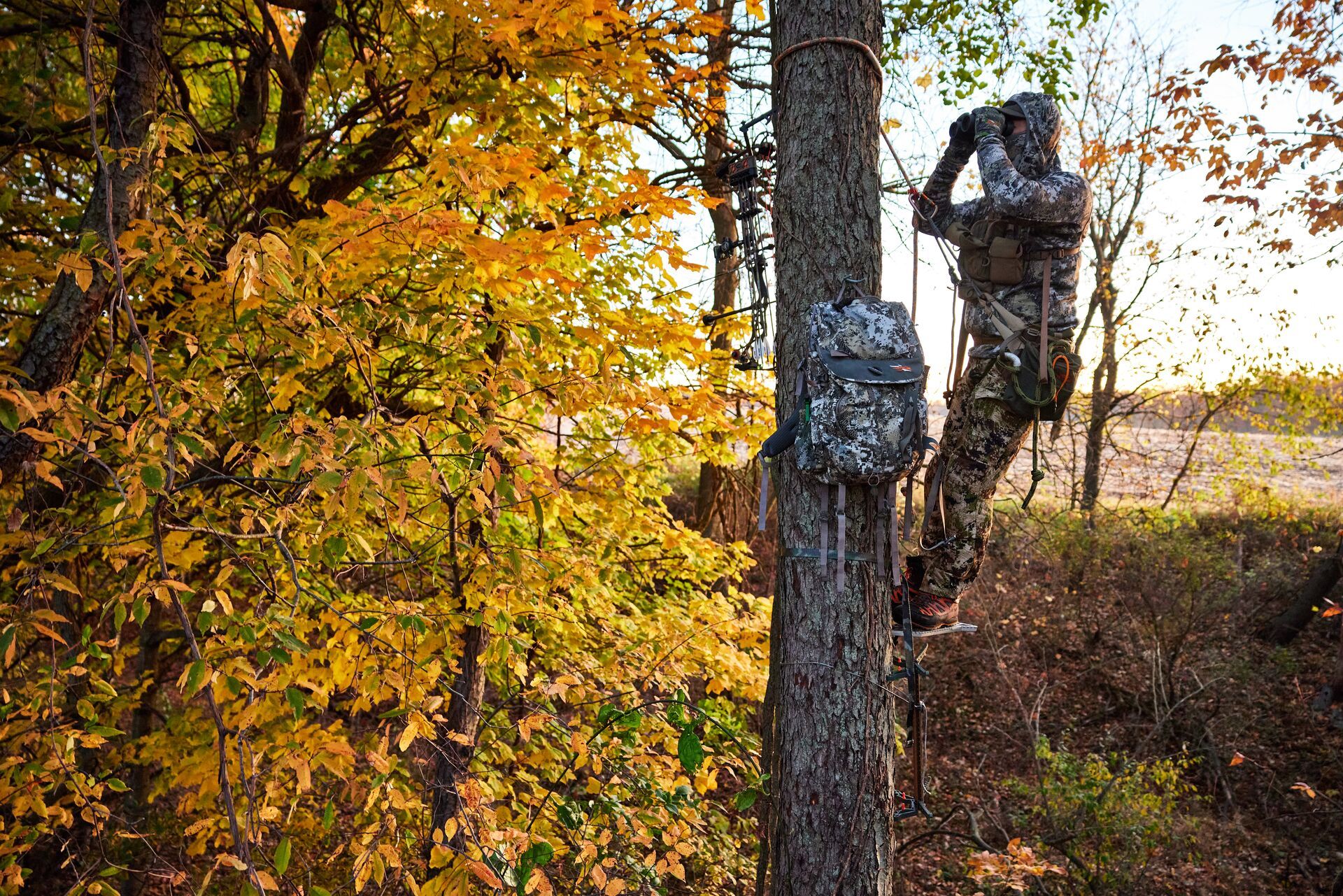Field Guide / Bowhunting
Where to Put Bowhunting Treestands and Saddles
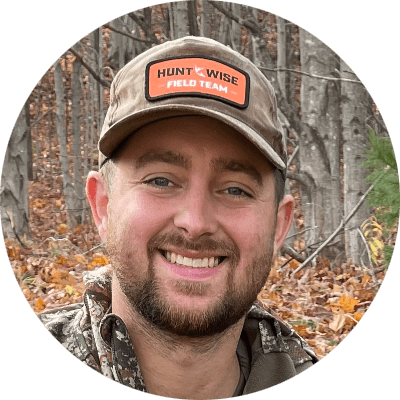
13 Minute Read
Knowing how to pick the ideal spot for your bowhunting tree stand (or saddle) takes time and experience. But with the right insights, you can quickly analyze an area and get set up for the perfect shot.
I grew up playing sports. Like most kids who grew up playing sports, I learned a lot of things that I still carry with me today, like leadership, working as a team, winning and losing gracefully, and more.
In baseball specifically, there are all kinds of little sayings coaches would echo, but one in particular has stuck with me. I was a pitcher, and I can still hear my coach’s voice echoing in my ear, “Pick your spot!” In that context, he, of course, meant to throw the baseball to specific places around home plate to get either called strikes or to get the batter to swing at balls outside the strike zone.
However, the phrase “pick your spot” can translate to many other areas of life. In this case, it translates perfectly to the deer woods and one’s ability to “pick their spot” for tree stands or saddle setups for bowhunting whitetails (successfully).
Let's talk about picking your spot for a tree stand and how to make sure it's a good one every time.
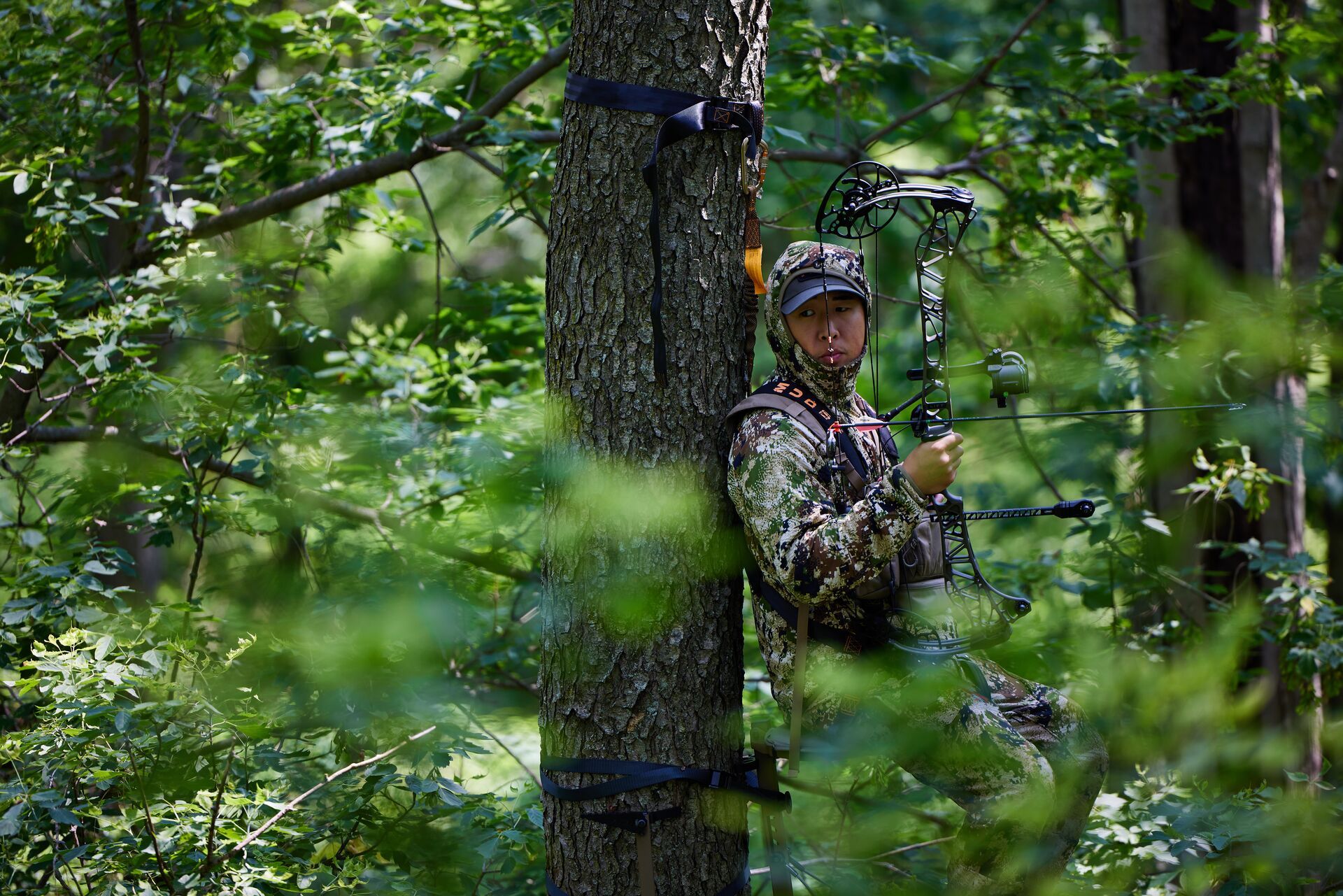
Where to Put Treestand Setups: What Should You Consider
There is a laundry list of things to think about when you’re considering where you should set your ambush spots for bowhunting deer. This is the type of thing that whitetail nuts obsess over.
It’s not uncommon for someone to compile dozens of data points into a spreadsheet and comb over all the details for hours just to pick where they think they might get a chance at a deer. Obsessing over the data and building information that might make a police detective jealous is certainly a valuable skill in hunting. Still, the process can be simplified beyond that and made much more approachable.
Will Deer Be Here?
The very first thing I consider when picking my tree stand or saddle setups is this: will deer be moving through, or to, this location?
The obvious first step to ambushing whitetails with a bow is getting yourself to an ethical distance from where the deer want to be. I like to look for three specific features that either dictate or attract deer movement.
These are:
- Pinch Points: Naturally occurring pinch points are a great predictor of deer movement. As the name implies, these are places where deer movement would be “pinched” to a specific place. This could be an opening between two big blowdowns, a spot between really thick cover that's more open, or something like the edge of a swamp and creek. Usually, pinch points will also be marked with heavily used deer trails.
- Natural Funnels: Typically, in the form of terrain features. A funnel could be a low spot where deer like to enter a field, a ditch or washout they’ll travel down, or a saddle between two ridges. I think of a funnel like a gentler pinch point. A pinch point will get deer to a very specific spot, whereas a funnel will get them to an area. Other funnels might be the shallow point of a creek or benches along ridge lines. These are all great spots to consider for ambush points for whitetails.
- Trails That Connect Bedding to Food: If you’ve spent any time in the woods, it’s very likely that you’ve seen these trails. Think about all the oak trees you’ve walked by and the deer trails you’ve seen walking to them. If you could fly up over the trees and take a look around, it’s very likely that you could trace those trees back to a thicket of some kind where deer will bed down to feel safe.
HuntWise Helps
HuntWise really shines for confirming trails from bedding to food, because you can get that overhead view with the app's satellite imagery and mapping features. When I come across a worn deer trail, I’ll pull up HuntWise on my phone and try to make assumptions about where the deer have been travelling from.
Use Trail Cameras to Confirm Deer in the Area
In each instance, I like to confirm deer movement with trail cameras.
Setting up cameras on trails or other terrain features is a great way to see what deer are in the area and how those deer are using the location you’re scouting. Maybe the funnel you found is thirty yards wide. Your trail camera will tell you if deer are using one side or the other more frequently. In turn, you can use that information to decide which side of the funnel to set your stand or saddle.
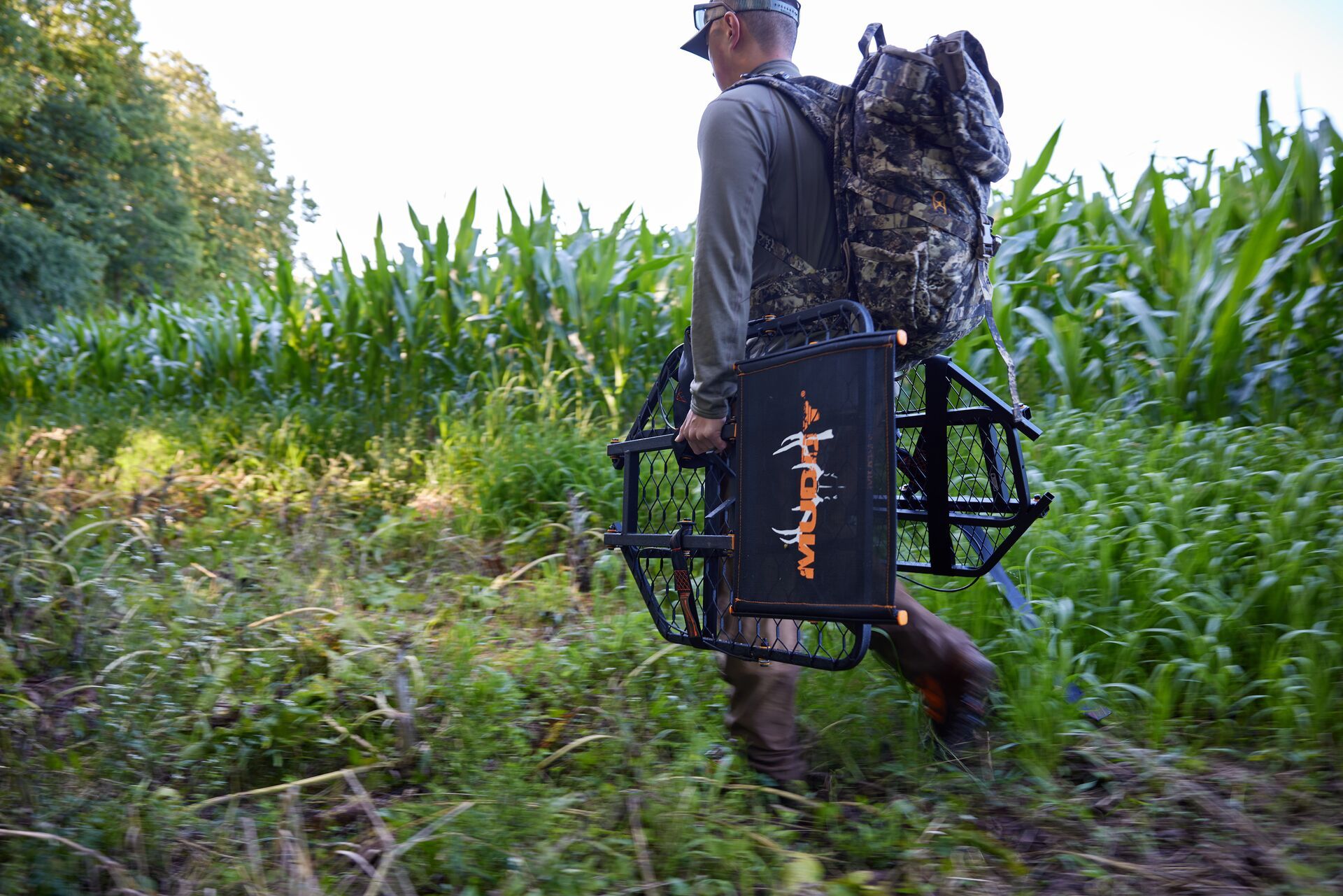
Be Downwind
Once I’ve considered terrain features and deer travel corridors, I then consider wind direction.
I won't argue if you can trick a deer’s nose or not. However, one thing I know for sure is that if the wind is blowing your scent away from them (instead of towards them), you’re going to be much less likely to get busted.
If you can set up your bowhunting treestands directly downwind of likely deer movement, you’re going to be in great shape. But the wind is rarely exactly what you need it to be.
In those instances, I like to play a wind that’s just off where the deer will be moving. As long as the wind blowing your scent misses them by a little bit, they won’t be able to smell you.
WindCast by HuntWise is a great way to set and determine what wind will work for specific spots. Once you drop a pin in the app, marking your stand's location, you can set ideal wind directions. This not only allows you to see where the wind would blow coming from different directions, but it also allows HuntWise to factor in wind direction when making predictions for which location you should be hunting.
I like to use WindCast to help me make sure I’m setting up in trees that offer me several different huntable wind directions.
Time of Day
Another thing that I keep in mind when choosing my treestand or saddle hunting location is time of day.
In general, it’s best to set up near bedding in the morning and near food in the evening. Deer move the most on the edges of daylight: at dawn and dusk. Then, during the brightest and warmest points of the day, they will bed down and stick close to more heavily covered areas.
During the evening hours, as deer come out of bedding, they will be seeking their favorite food sources. Deer will spend the majority of the nighttime hours in those food sources before returning to their beds shortly after daybreak the following morning.
For me, I really love being close to swamps, thickets, and hard-to-get-to places in the morning. While accessing those locations, I always keep in mind where the deer might be still feeding before they make their way to their beds.
In evenings, I really just look for hot sign and whatever sort of food source is attracting the deer on a given day. Maybe that's an apple tree tucked back into the woods, or downwind of a white oak flat. I focus on food, and go where the deer are showing me to go.
Stay Out of the Light
Another thing I make note of when I’m choosing how to hang tree stands and saddles for the best shot is how the light will affect my hunt.
Keeping yourself concealed in shade will help you stay more hidden from the deer. This is something that is often overlooked, but can really help seal the deal during those critical moments when your target animal is getting into range.
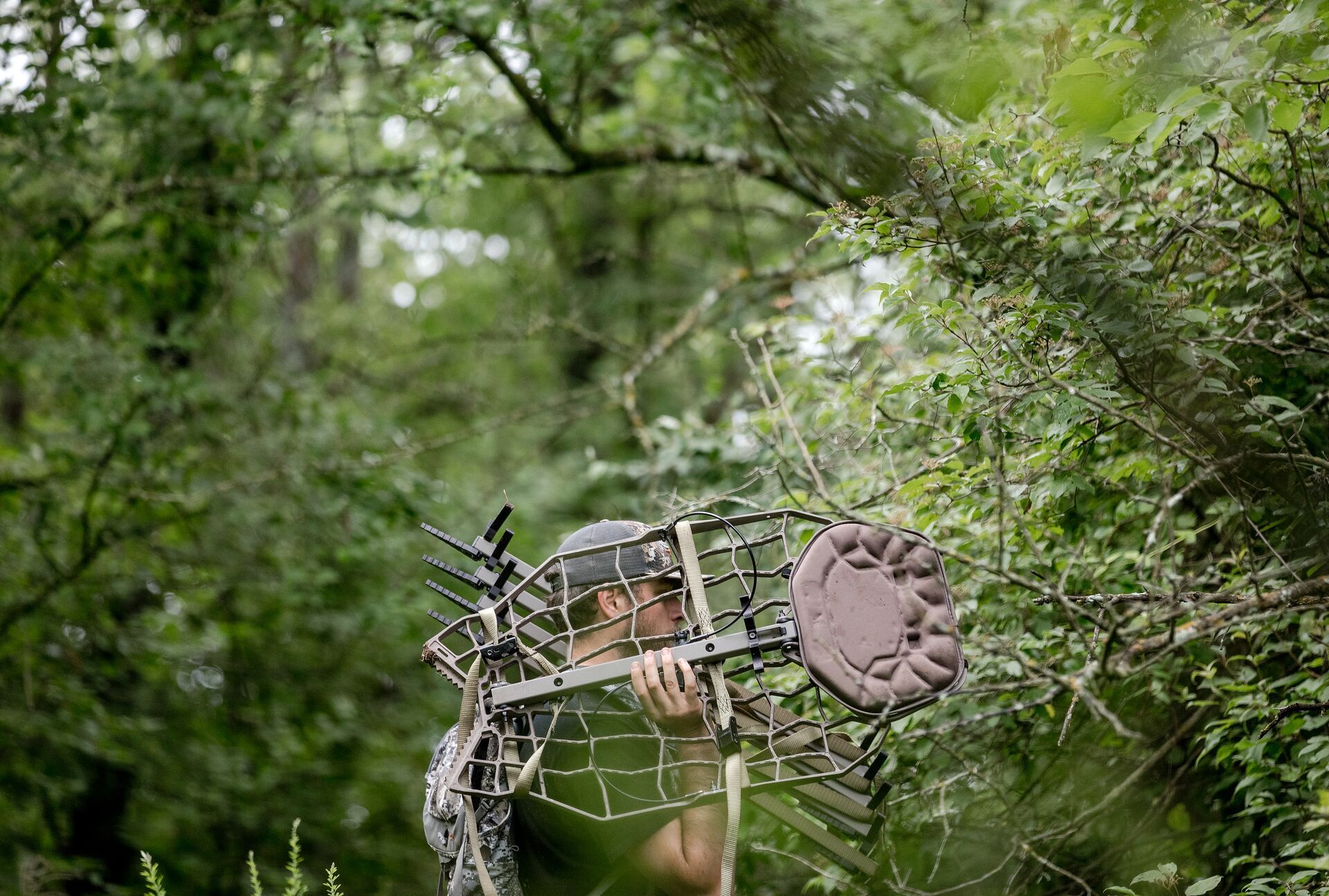
Where to Put Treestand Setups
When I’m selecting the actual tree to hang my stand in, I like to take a second to choose a tree that meets the criteria for both safety and ease of use.
To choose that tree, I’m looking for a few things in particular:
- First, I want to choose a tree that is around 18-22 inches in diameter and with minimal lean in any direction; the straighter the tree, the better. Smaller and larger trees will work, of course, but for the ideal tree, that's the size I like to find. I’ve had my saddle in trees that were much smaller, but they never feel quite right.
- Along with that size, I also want to ensure that the tree has no dead limbs hanging overhead. Not only could a limb falling at the wrong time cause unnecessary noise and ruin your hunt; more importantly, dead limbs can be extremely dangerous when they fall from trees.
- I also like to avoid trees with really loud bark or that will require too much limb trimming. Both of those issues can be worked around, and ultimately won’t ruin a hunt if that's the best tree within shooting range. However, we are still looking for the perfect tree.
Oaks and maples are my favorite trees to hang stands and saddle setups from if they meet all of the criteria above.
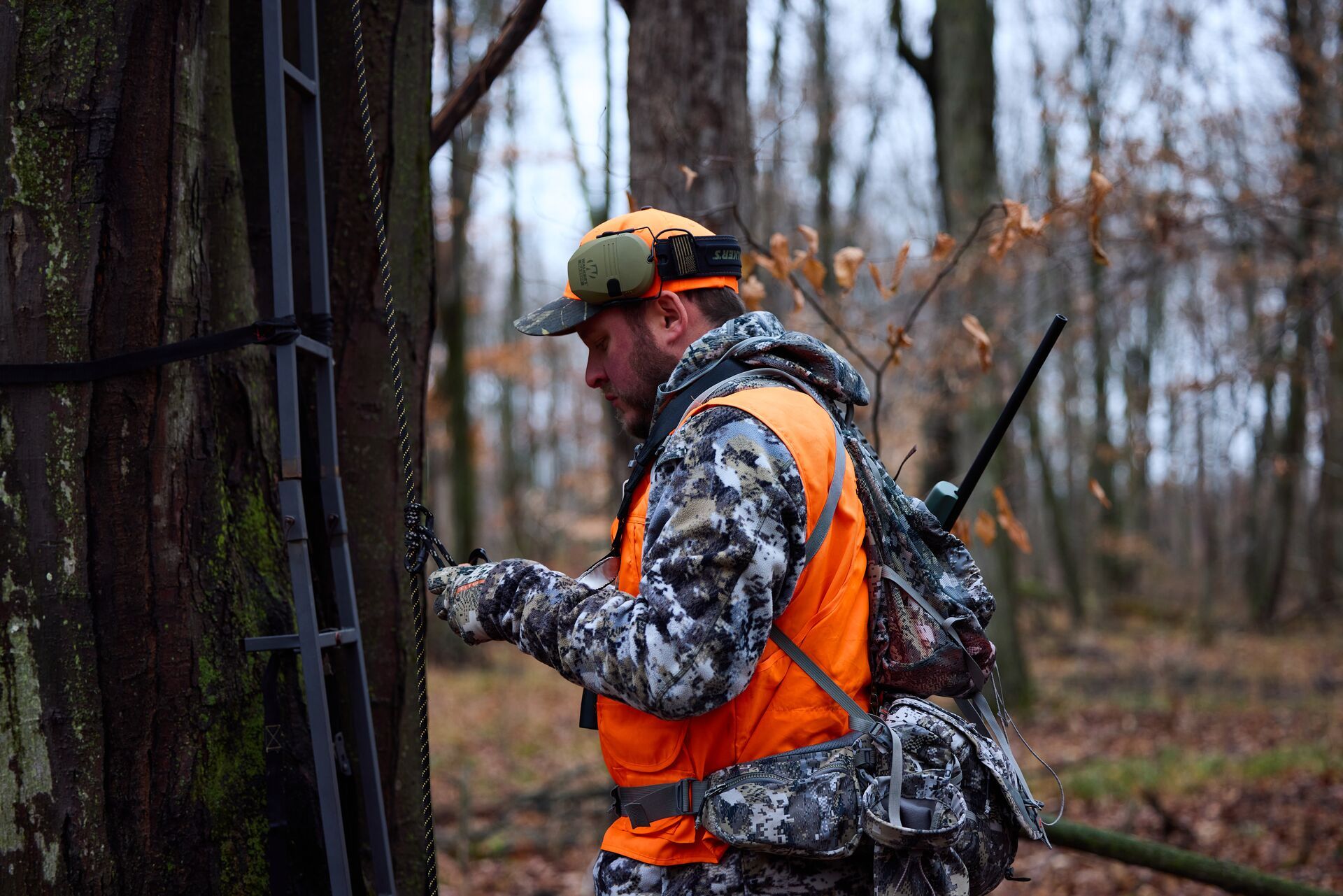
How to Hang a Saddle or Treestand Safely
Now that you’ve picked your perfect location and found the perfect tree, it’s time to learn how to hang tree stand and saddle setups.
Let’s Start with Tree Stands
First, and most importantly, always wear your safety harness.
Any time you’re climbing a tree, that safety harness needs to be properly fastened to your body before you even consider leaving the ground. Too many things can go wrong in an instant, and your health and safety are not worth risking.
While climbing up the tree, you should use a lineman’s belt to allow your hands to be free to help place climbing sticks or, if you need to, grab the ladder or steps on the way up. Once you reach the height of your stand, you should clip your safety harness to the lifeline that’s attached to the tree.
Getting your gear up and down the tree is simple. Just use a gear strap or rope of some kind. Don’t ever try to climb with gear on your back. It’s too cumbersome and makes climbing difficult. Instead, simply tie whatever gear you will need to a rope of some kind and hoist it up after you’re in the stand.
Always Inspect Your Gear
Before and during each hunt, I’m always inspecting my climbing gear to ensure that everything is in safe working order. My straps and ropes get checked prior to climbing, and my sticks or ladder get checked as I place them or climb up them.
Any rips, tears, frays, or rusted bolts of steps should be very closely inspected to ensure their safety. Any items that appear to be weakened in any way should be replaced before continuing to climb.
Practice Before Your Hunt
A critical but often overlooked part of being a successful hunter is to practice how you play. In other words, take the time to get out in the woods and hang some sets this summer.
Get familiar with your gear and the process that works best for you to get that gear into a tree for hunting. I also like to carry my bow and a target with me so that I can practice shooting from the tree stand at least a few times before the season starts.
You can never be too prepared for that beautiful moment when the animal you’re hoping to harvest walks into your shooting lane.
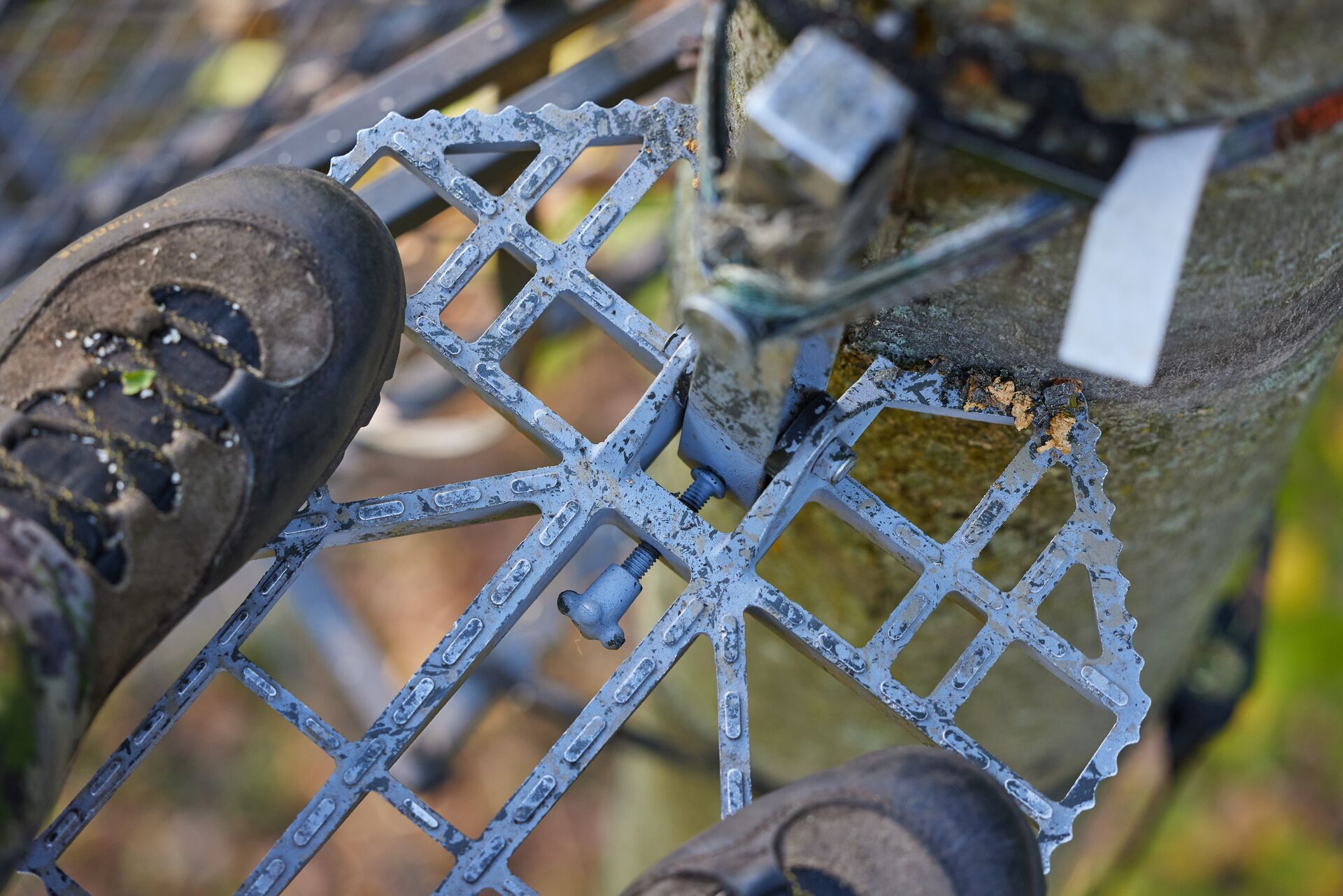
What About Tree Saddles?
Now that we’ve discussed tree stand safety, let's touch on the safety tips and important things to remember when climbing and hunting with a tree saddle.
First, treat your saddle the same way you would a safety harness. Use a lineman's belt while climbing, then clip your tether to the bridge of your saddle after you’re up to hunting height.
I personally like to use a platform to hunt from, but some folks will use a ring of steps or hunt from their top stick and use knee pads. Whatever you choose to do, the more stable you can be in the tree, the better odds you’ll have of making a good shot on a deer.
What do we mean by a platform? Check out this short video from our partners at Tethrd (and if you're in the market for a platform or other saddle gear, take advantage of 15% from Tethrd for Pro and Elite HuntWise subscribers).
Don't Forget About Comfort
You should also become proficient at identifying the different components of your saddle and how to adjust them for maximum comfort.
For example, keeping your tether near or slightly above eye height allows for your body to have a comfortable angle to the tree. From there, you can adjust your tether length and bridge tightness to make sure that you’re comfortable in the tree. I usually make small adjustments throughout my sits.
How to Climb Into a Tree Saddle
There are multiple climbing methods for using a tree saddle, and each will require research, planning, and practice.
- You could choose to use climbing sticks, either with or without additional aiders, to help you get to higher heights in the tree.
- You could also choose to learn and adapt the one-stick method.
- You might hunt mostly private land, where you could use arborist spikes to climb the tree.
- Perhaps you hunt in an area with lots of trees that are easy to climb by using their branches.
However you choose to climb, make sure that you are perpetually tethered to the tree, both on the way up and down, as well as while you’re hunting.
Again, Practice Before You Hunt
Much like with hunting from a tree stand, I like to get out in the saddle during the summer months to practice shooting.
A saddle, in particular, allows for some angles that you simply cannot practice from any other way, except to climb the tree and do it. Get those “live reps” in! Not only will it make your climbing more efficient, it will make you a more lethal and ethical hunter in the fall.
Stay Stealthy
Keep in mind, whether you’re setting a tree stand or a tree saddle, it’s important to maintain a stealthy approach.
Trim branches as sparingly as you can to maintain cover in the tree. Make sure you give yourself good shooting lanes, but you shouldn’t try to make it so you can shoot 360 degrees around the tree. The easier you can see, the easier the deer can see.
Remember, deer live in the woods you hunt all the time. They can tell when things change and when things are out of place. Try to keep their environment as close to undisturbed as you can, and this will keep the deer herd relaxed and make them easier to hunt.
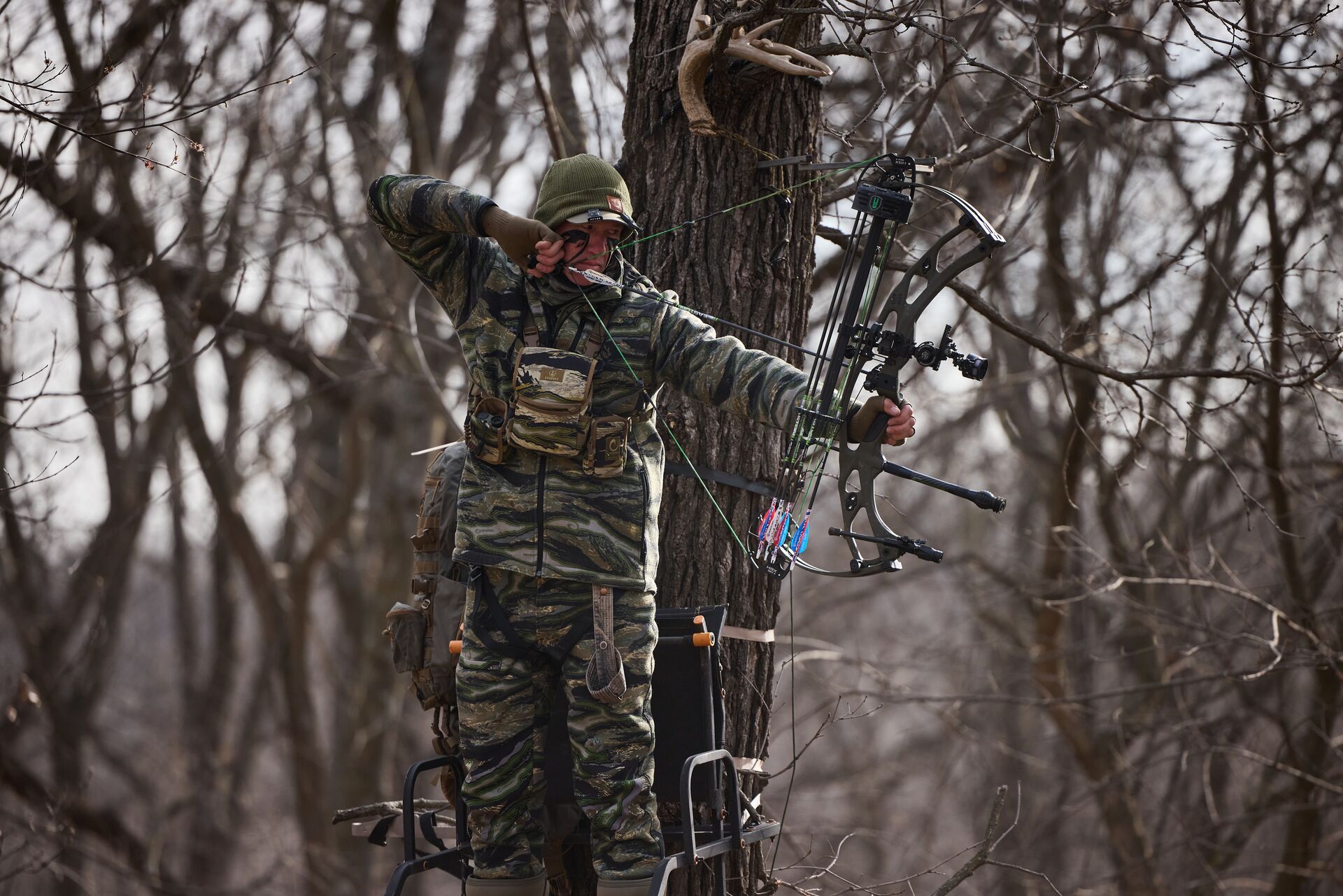
Tell Someone You're in a Tree (and Where It Is)
In addition to the safe practices involved in climbing, it’s important to take precautions about when and where you’re hunting as well.
Can a family member hear you if you fall from a tree in the woods? Probably not.
So, someone should always know your plan. Let them know where you’re going, when you plan to be home, and ways they could potentially reach you if you’re out of cell phone service.
Too many times, hunters have gotten lost or hurt without someone knowing where they were hunting. Sharing your plan with someone you trust could very well save your life in an emergency situation.
In a non-emergency situation, it will also make it easier for them to find you to drag a deer out.
My favorite way to let someone know where I'll be hunting is by sharing my location with them via HuntWise. I’ll either send them my location once I’m at my tree, before I start climbing, or prior to even entering the woods. I’ll send a pin that’s very close to the spot I’m going to hunt.
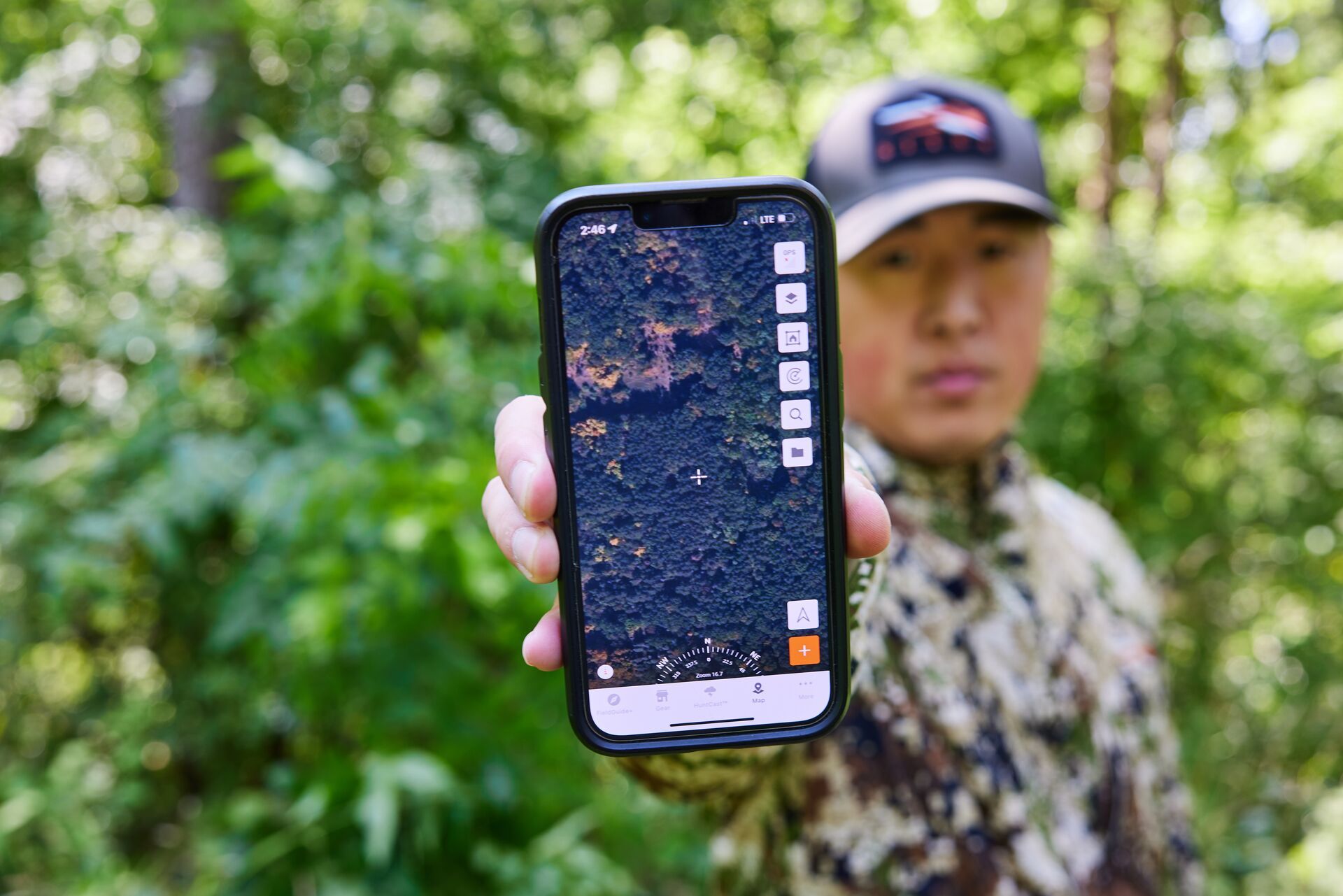
Use HuntWise Set Bowhunting Tree Stands for Fall Hunts
HuntWise has been an incredible tool for me as I’ve become more and more mobile with my deer hunting. Between pre-scouting with HuntWise’s satellite imagery and setting pins to mark cameras and stand sights, I honestly use HuntWise every day from about August 1st to the end of the season.
Keeping track of the wind has really upped my success rate on mobile setups with my saddle. As summer clicks by and we approach deer season, start practicing these setups and shooting from them. Use HuntWise to log all of the data and plans that will make you successful this fall.
Don't have HuntWise yet? Download it today and get your first week free!
Try a Pro or Elite subscription to take advantage of bigger gear discounts for tree stand or saddle gear.

Take advantage of your HuntWise Elite subscription and check out our Field Guide+ series, How to Saddle Hunt Like a Pro (Even if It's Your First Time)!
Featuring Greg Godfrey of Tethrd, this series covers everything you need to know to get started and hunt successfully from a tree saddle, including the gear you need, how to get set up, how to shoot from your saddle, and more. Check out the series trailer below!
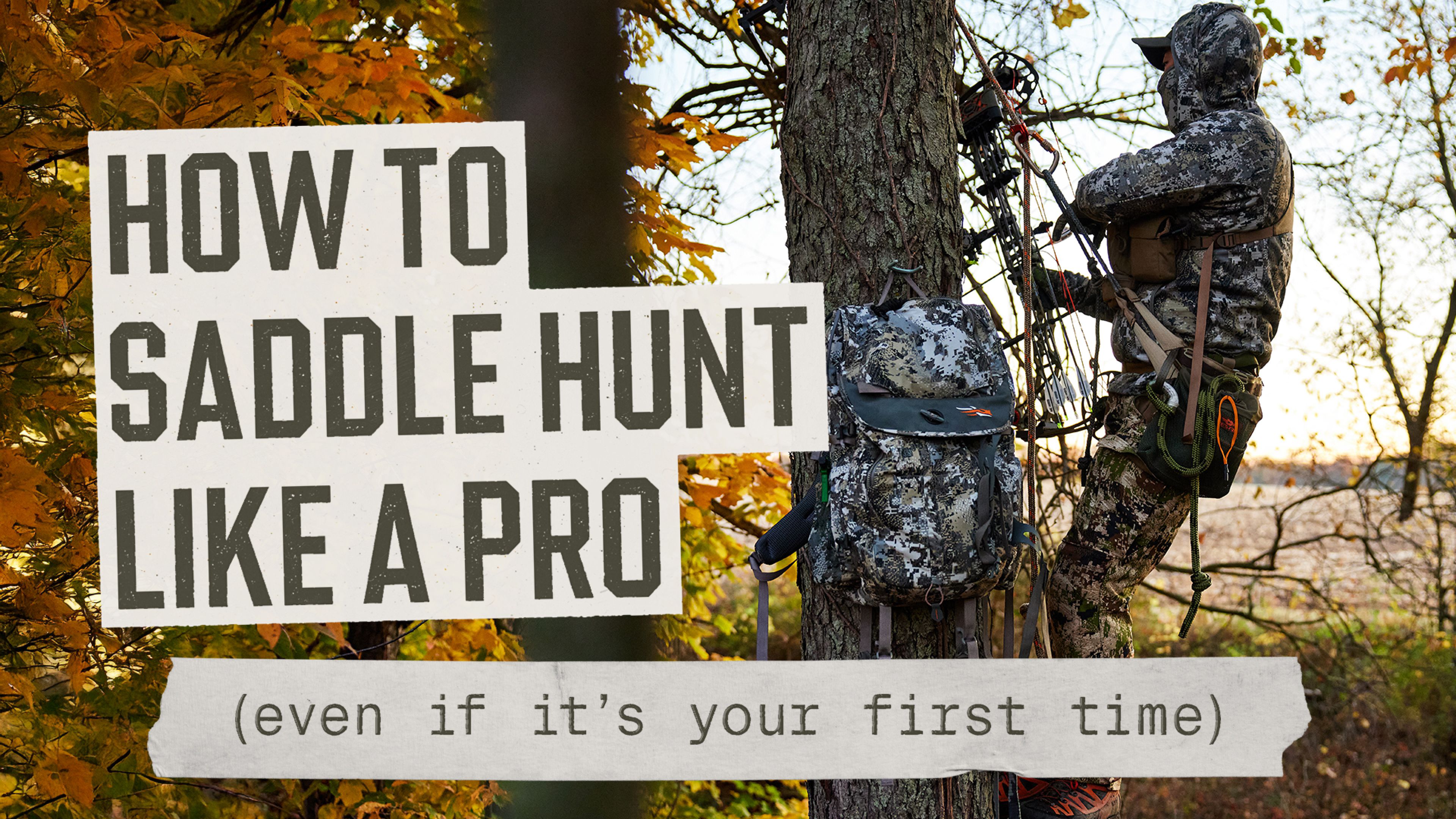
Previous in Bowhunting
Next in Bowhunting
More Content Like This
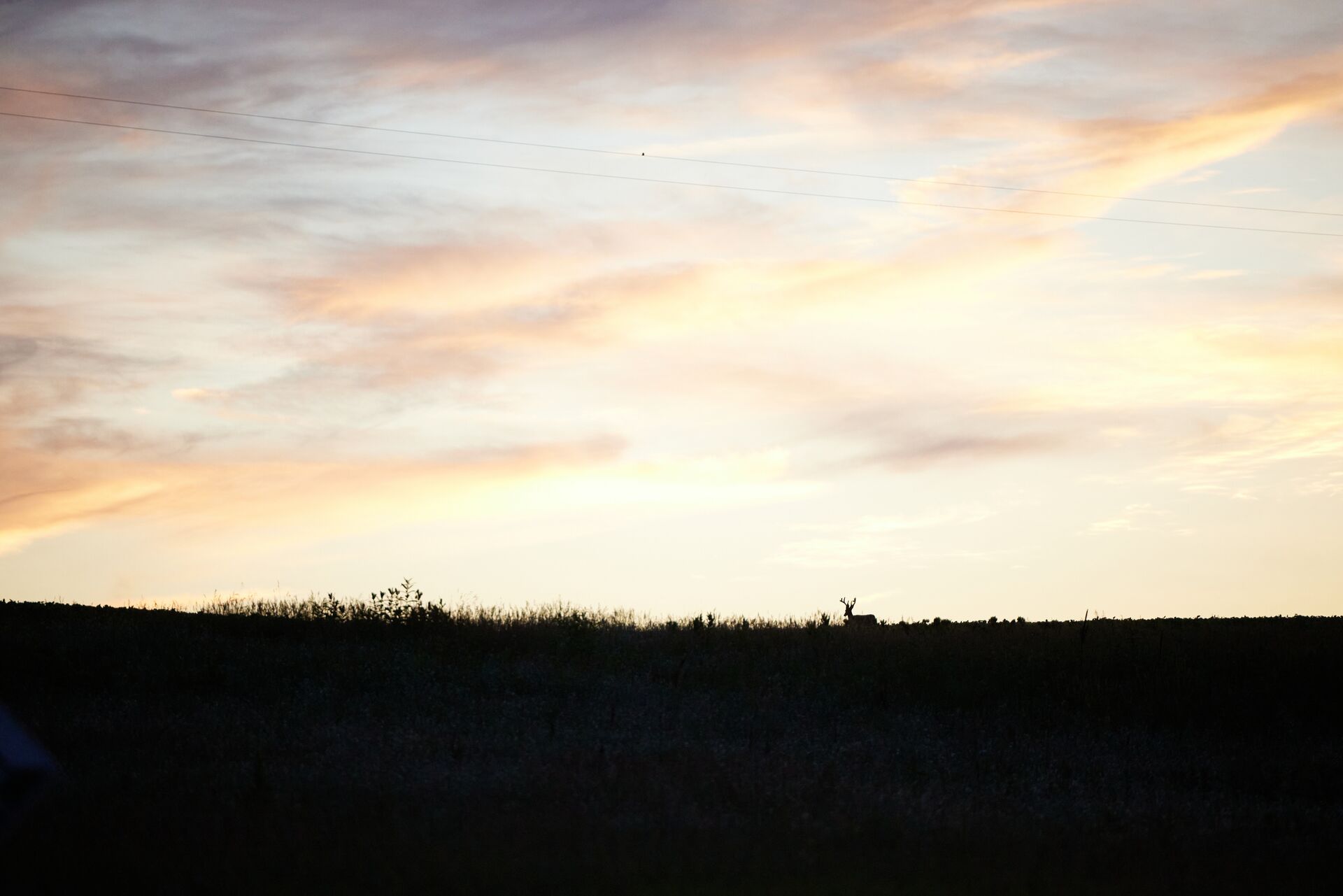
What Is a Sling Bow (and How Do You Use One)
Have you used one? There's a lesser-known bow — the sling bow — a hunting tool that combines elements of a slingshot and a traditional bow.Read More
Read More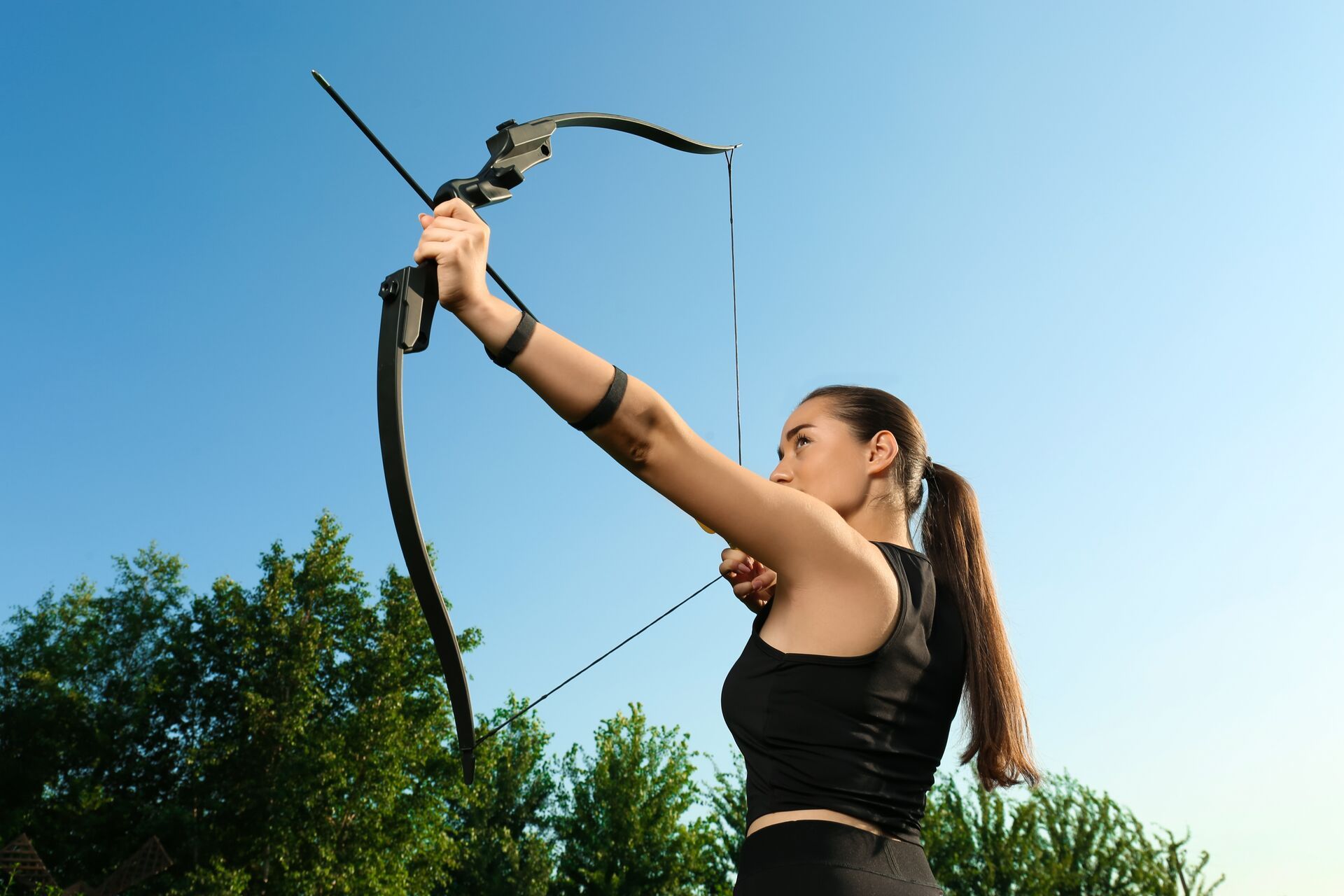
Compound vs Recurve Bow: What's the Big Difference?
People have been hunting with bows and arrows since the Stone Age, and traces of ancient archery equipment have been found on every continent on which humans have lived. Read More
Read More
How to Test Broadhead Sharpness [A Guide]
The offseason is a great time to do all the bow maintenance, practice, and preparation before the next hunting season begins. I spend countless hours every year tuning and practicing with my bow. Read More
Read More Bowhunting
BowhuntingWhat Is a Sling Bow (and How Do You Use One)
By Teri Williams | 10/08/2024Have you used one? There's a lesser-known bow — the sling bow — a hunting tool that combines elements of a slingshot and a traditional bow.Read More
Read More Bowhunting
BowhuntingCompound vs Recurve Bow: What's the Big Difference?
By John Gay | 09/19/2024People have been hunting with bows and arrows since the Stone Age, and traces of ancient archery equipment have been found on every continent on which humans have lived. Read More
Read More Bowhunting
BowhuntingHow to Test Broadhead Sharpness [A Guide]
By John Gay | 05/19/2025The offseason is a great time to do all the bow maintenance, practice, and preparation before the next hunting season begins. I spend countless hours every year tuning and practicing with my bow. Read More
Read More
1 of 3
